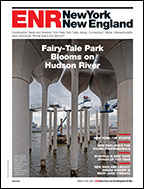 |
| Administrator Blakey sees strain on trust fund. |
The Federal Aviation Administration says that airline passenger volume this year will return to the level achieved in 2001. In the latest version of its annual forecast, released March 17, FAA predicts that U.S. commercial airlines' 2005 enplanements will total 717.5 million, up 4.2% from last year. If the agency's forecast proves accurate, it would be the highest level since 2000, when passenger volume was 697.6 million.
Over the next 12 years, FAA says, enplanements will post an annual average gain of 3.4%, and exceed 1 billion in 2015.
For airport infrastructure planners, passenger volume is a key indicator of the needs for such facilities as terminals and parking garages. But aircraft operations--total takeoffs and landings--are a better yardstick to measure the stresses on runways and taxiways. FAA foresees operations rising, too, but at a slower rate than passenger traffic. The agency says operations should go up 2.3% in 2005, to 64.5 million. Operations also increased 0.8% in 2004, to 63 million, marking their first annual gain since 2000.
In a speech to the FAA forecast conference in Washington, Marion C. Blakey, the agency's administrator, said that "commercial aircraft operations at our major airports are within 2% of pre-9/11 levels." At 17 of the 35 largest airports, operations exceed the totals seen before the 2001 terrorist attacks. "The demand for seats is back," Blakey said.
But she also observed that the picture is changing, with low-cost and regional carriers holding 43% of the market, up from 30% five years earlier, and the average one-way fare declining 9% since 2000.
Moreover, with use of smaller, regional jet aircraft increasing, Blakey said that "the shorter runways that once catered to turboprops no longer can do the job."
Blakey warned that the Airport and Airway Trust Fund, which finances FAA airport construction grants, air traffic control equipment and a large share of its operating budget, is facing strains. "On the back of an envelope," she said, "it's easy to see that the larger number of the regional jets means less revenue for the trust fund from each flight [and] a greater workload for the FAA. This is further compounded by the expansion of low-cost carriers and decreasing ticket prices."
While not endorsing new user fees, excise taxes or more money for FAA from the federal government's general fund, Blakey said that "we need a revenue stream based both on our costs and on our actual units of production."
(Photo courtesy of Federal Aviation Administration)

